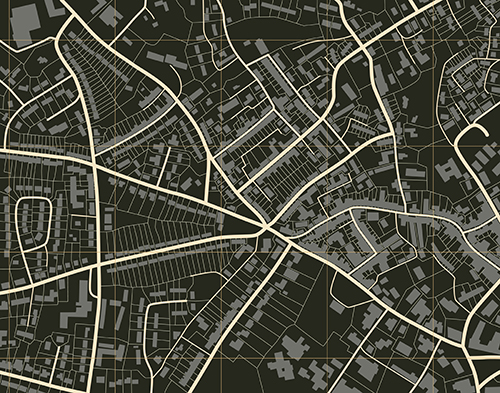Comparison as Practice: Provoking Relations, Assembling the Comparator
Michael Guggenheim, Joe Deville and Zuzana Hrdlickova
This blog draws on discussions at the 7th ESRC Research Methods Festival, exploring different aspects of knowledge generation and understanding in the academic field, with particular application to the study of cities and urbanism.

Comparing cities, like comparison more generally, is often thought of as a problem. It is thought of as a problem, because comparison has become to be seen as an ethically dubious practice, which pits entities against each other, invariably taking one as a standard against which others are measured. Comparison smells of colonialism, or at least a practice of legitimizing cultural hierarchies, with big, western cities as standards. No doubt, such critique is deserved, because of a history of comparative acts, in which Chicago, Berlin, Paris and London are vastly over-researched model systems, while Arequipa, Doncaster, or Tiznit hardly feature at all (save for a few champions of unusual comparisons of small cities, such as Jenny Robinson and the late Mathieu Hilgers).
But while such ethical critiques of the comparative idea are justified, they, like the standard format of doing comparisons, take the practice of comparing as a given.
In a recent book, we have put the practice of comparison into the spotlight by discussing what we call the ‘comparator’. The comparator is a result of an auto-ethnography informed by our background in Science and Technology Studies. While we developed this concept to help make us sense of our own research on state civil protection in three different contexts – India, Switzerland and UK – here we would like to focus on its basic features, to allow you to understand generic practices of comparison. Who, or rather, what is the comparator? And how does the comparator affect a researcher’s relationship with the objects being compared?
The comparator, like the electronic device from which we borrow the name, is an assemblage that undertakes comparative work. As occurs with the comparator chip, social scientific comparison has to be assembled from diverse entities, according to specific forms of knowledge and expertise. In order to produce the comparative output, these assembled parts have to actively intervene and provoke relations between previously uncompared inputs. For obvious reasons, the comparator in social science is vastly more complex and heterogeneous than the comparator chip. It is not a single thing, but an assemblage of researchers, funders, research technologies, including entities such as databases and software, legal regulations and theories and methods. When it is put to work, the comparator creates comparisons by shaping and being shaped by the world around it.
For your convenience, we have identified a number of steps and processes involved in making a comparator work. First, a comparator has to be assembled. Assembling the comparator in our case began by writing a research proposal in which a certain mode of working was outlined. The research proposal is already part of the comparator: it is a hypothetical comparator that puts cases into relation, before any data has been gathered. It pre-structures comparative work in this case by suggesting to compare different fieldsites and to hire one researcher per fieldsite. Of course, other ways to assemble the comparator are possible, and each of these would result in a different comparative practice. For example, we could also have decided to assign fieldworkers a topic rather than a fieldsite, or go on fieldwork in teams.
Having assembled the comparator, the next step is to calibrate it. Calibration is one way of deliberately moving towards this imperfect unity. It can be understood as an ongoing mutual adjustment—of each to each other, as well as to our technologies and our research objects. This process is a strange kind of putting what is normally “private” and individually memorised into the hands of the research group. Calibration happened in our case through a common reading group as a way to adjust our theoretical and empirical lenses. It also happened through the creation and maintenance of a shared bibliographical database. In a bibliographic database, any item or note could potentially be a unit of comparison with any other. The result is that, to keep comparison stable, the database ends up mirroring and reinforcing the project structure.
Finally, the comparator goes to work. A comparator is not only calibrated in relation to the persons that compose it, but also in relation to the settings and objects it attempts to compare. Each field note in one site raises a potential question about the respective field note in the other sites, and each movement of the research trajectory in one site adds tension to the overall direction of the comparator. To assume that the comparator simply has the power to force ethnographic sites into one comparative framework would ignore the fact that each negotiation with a fieldsite has its own trajectory that can only partly be influenced by the needs of the comparator. The fieldsites thus have considerable power over the comparator.
This begins with the problem of access – that is how and when we were able to obtain entry to our respective field sites. Thus for example we got access in one fieldsite very quickly from the very top of the organisation, whereas in another, access was very slow and from below. These two forms of access then produce very different ideas of the respective fieldsites and very different kinds of data to consider. This concerns the variations in how access is achieved and when and where it happens. Each can shape the overall comparative career of the project: access in one site may open up questions in another before any field research has even been possible; a denial of access in another site may prompt a change of strategy in yet another, a move towards a different type of data which, in turn, may reflect back on the work planned or being undertaken in one or more of the other sites.
 Second, an important feature of a comparator is that it can produce absence. When looking at one site, one object, we can only observe presence. To see absence, we need presence somewhere else, otherwise we do not notice the void. In our case, not only did shelters become objects to be researched, but also their prominence in one site prompted questions as to the reasons for their absence in other sites. It is only by moving through a comparator (either ours or someone else’s) that presences in one site can trigger an attention to an object that does not exist in another site. Absence became visible here as data, as something that can be positively discussed only because it is relevant somewhere else.
Second, an important feature of a comparator is that it can produce absence. When looking at one site, one object, we can only observe presence. To see absence, we need presence somewhere else, otherwise we do not notice the void. In our case, not only did shelters become objects to be researched, but also their prominence in one site prompted questions as to the reasons for their absence in other sites. It is only by moving through a comparator (either ours or someone else’s) that presences in one site can trigger an attention to an object that does not exist in another site. Absence became visible here as data, as something that can be positively discussed only because it is relevant somewhere else.
Third, the field shifts the comparator: We – and our devices – are not the only comparator in the research project, however. Our comparative project has encountered a world populated by a myriad of circulating comparators. And these comparators have shifted our own. It is not a simple case – as has often been observed – that thinking is always comparative, and that this thus also includes ordinary members of society. When we refer to the circulation of comparators, we refer to the use, by others, of explicitly deployed forms of comparison. These are the kinds of comparisons undertaken by academics and a range of other interest groups, including part-academics part-activists, policy-makers, and our informants. They open up potential important questions about the people, organisations, and things we are studying. Field comparators, though, very often have a transparent political agenda. They are pre-occupied with what they perceive to be problems of the social worlds they exist in, and are looking for comparison with other cases, where the problems are supposedly absent or worse.
Our attraction to field comparators is also based on the very fact that these comparators are so different from our own. First, field comparators are fast, because they operate with minimal justifications invoking norms of empirical proof and theoretical rigour. Ours is cumbersome, as it relies on all the various steps we have described in this article in order to make it work and for it to conform to ethnographic and academic standards. Field comparators do not rely to anywhere near the same degree on this sometimes troublesome infrastructure. Actors in the field can invoke any comparison they like, often without the need to justify it or to calibrate a comparator first.
Second, our comparator is mainly built as a tool to understand differences. As a social scientific comparator, it attempts a degree of symmetry by holding one example against another and accounting for various absences and presences, varying value judgments and operations grounded in historical routines. It simultaneously adds analysis on either side of the entities being compared and tries to keep each case similarly thick.
The field comparators that we have encountered tend to operate in a more asymmetrical way, choosing comparisons strategically to make a political point. The asymmetric comparator proceeds by taking its own case as fully known and understood while the other provides a standard to enable the comparator to make a judgment against it, based on a simple set of assessments. Comparison here is an evaluation composed of binary values: there is a simple yes or no: Japan is good at preparedness, we must strive to become like them; Japanese nuclear power plants break, ours can (or can’t).
 One consequence of this is that when we integrate the field comparator into our own it becomes ‘re-symmetrised’ and re-politicised in ways that may run counter to its use in the field. Without our own comparator, our field comparators’ interventions through comparison would be not much more than the invocation of the comparative facts of another situation to make a political point. With our comparator, this comparative fact looks rather different: drawing our collective attention to the political composition of the comparators it absorbs.
One consequence of this is that when we integrate the field comparator into our own it becomes ‘re-symmetrised’ and re-politicised in ways that may run counter to its use in the field. Without our own comparator, our field comparators’ interventions through comparison would be not much more than the invocation of the comparative facts of another situation to make a political point. With our comparator, this comparative fact looks rather different: drawing our collective attention to the political composition of the comparators it absorbs.
In assessing the quality of a comparison, the focus should thus be on the operations of the comparator (potentially by comparing it to other comparators) and not on some abstract ideas about objects and whether they are comparable. This is not a call for each and every comparison to dissect its comparator as we have, or to see auto-ethnographic reflexivity as providing a ready-made solution for the problem of comparison. It is rather a call for attending far more to the contingencies of both comparison and the operations of the comparator. The question of the ethics and politics of comparison then cannot be answered by judging what is compared (or not), but how comparators operate. It has to be answered by assessing whether by selecting the particular cases, by assembling, calibrating and feeding the comparator in the way that we have, we worked with care, with integrity and with a sufficient degree of skill.
More on this subject can be found in the book Practising Comparison, edited by Joe Deville, Michael Guggenheim and Zuzana Hrdličková.